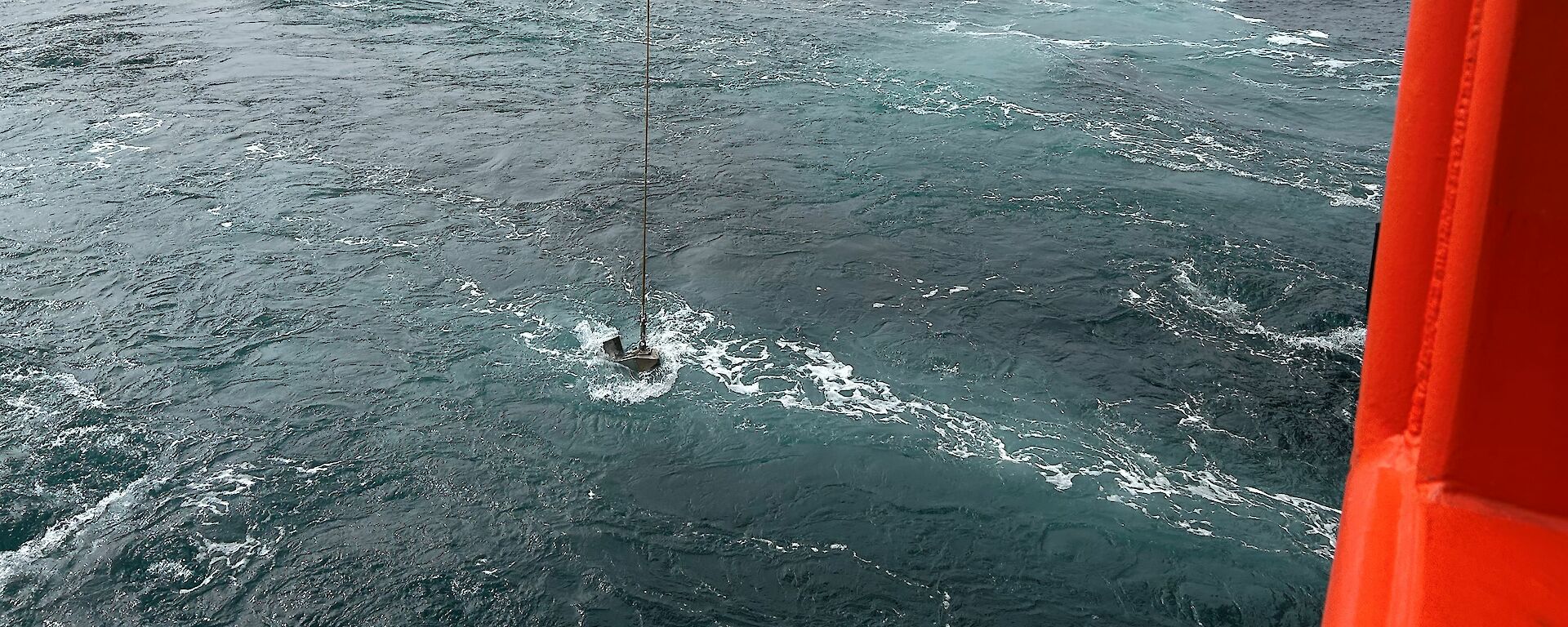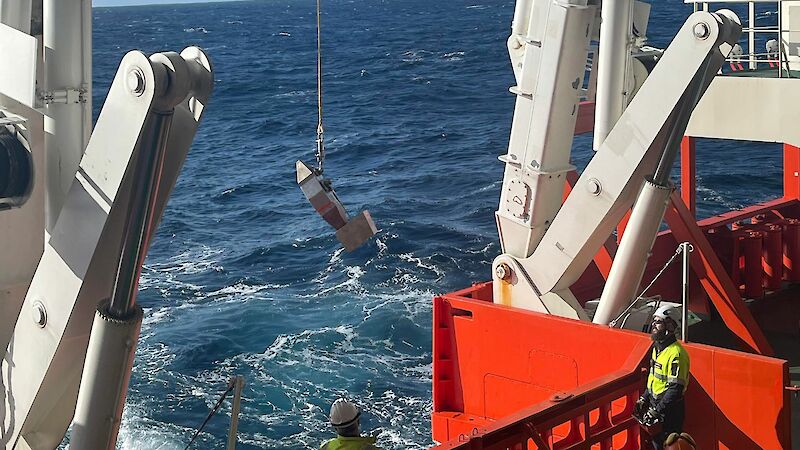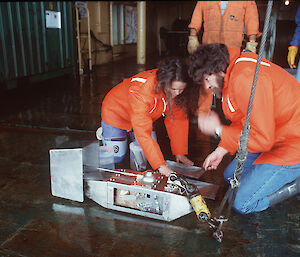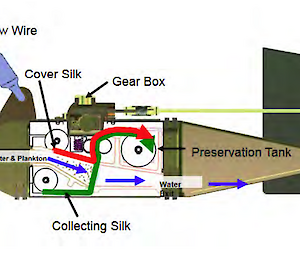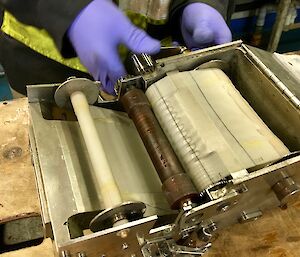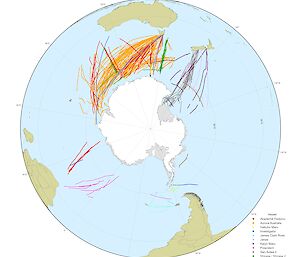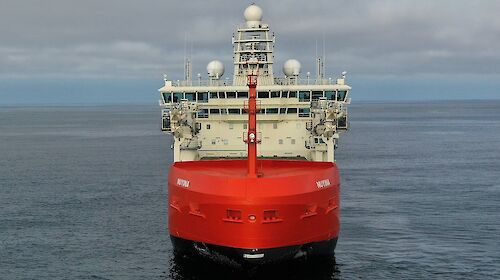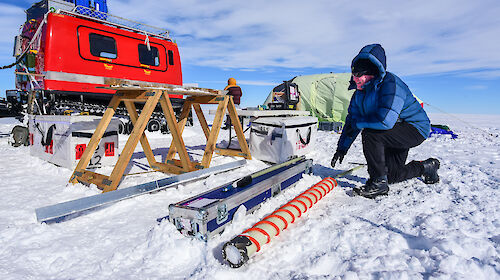The CPR is a low-tech but ingenious instrument that traps plankton between two sheets of silk. Regardless of the speed of the vessel, the sheets of silk are spooled forward by water turning an external propeller, at a fixed rate of one centimetre per nautical mile travelled.
Back in the laboratory, each set of silks is unrolled and cut into sections representing five nautical mile samples. Plankton, which includes larval and juvenile krill, are then identified through a microscope and counted.
The Australian Antarctic Program (AAP) has towed the CPR on almost every voyage to Antarctica and the sub-Antarctic since 1991.
Zooplankton biologist John Kitchener, from the Department of Climate Change, Energy, the Environment and Water’s Australian Antarctic Division, said about 530 CPR tows, totalling more than 325,000 km, were conducted on icebreaker Aurora Australis between 1991 and 2020, when the ship was retired.
In that time the survey has grown rapidly to sample more than 70% of the Southern Ocean, with ships from Australia, Japan, New Zealand, Germany, UK, USA, Russia and Brazil/Chile.
“The CPR has proven to be the most cost-effective and efficient method for long-term monitoring,” Mr Kitchener said.
“It quickly, routinely, and consistently collects real on-site data about zooplankton populations over large oceanic distances using a standard sampling method.”
Over 33 years the Southern Ocean CPR tows have revealed changes in the abundance, composition, distribution and diversity of plankton species.
This includes a decline in the numbers of krill caught, an increase in smaller zooplankton, and sudden massive blooms of other plankton species spread over large areas.
The Southern Ocean CPR data can be combined with surveys from ships sailing oceans around the world, providing a global picture of the status of, and change in, plankton.
“The Global Alliance of Continuous Plankton Recorder Surveys (GACS) was founded in 2011 and includes the SO-CPR survey and 12 other regional CPR Surveys from across the globe, providing a comprehensive understanding of changes in the marine environment,” Mr Kitchener said.
Of the GACS partners, the ‘CPR Survey’ (operated by the Marine Biological Association in the UK) is the longest running of all, commencing in 1931. In 2021 this survey was awarded the Guinness World Record for the ‘greatest distance sampled by a marine survey’, equivalent to 326 circumnavigations of the world.
Nuyina has now made its own small but important contribution to the global survey, marking the start of a new era for AAD CPR sampling in the Southern Ocean.

